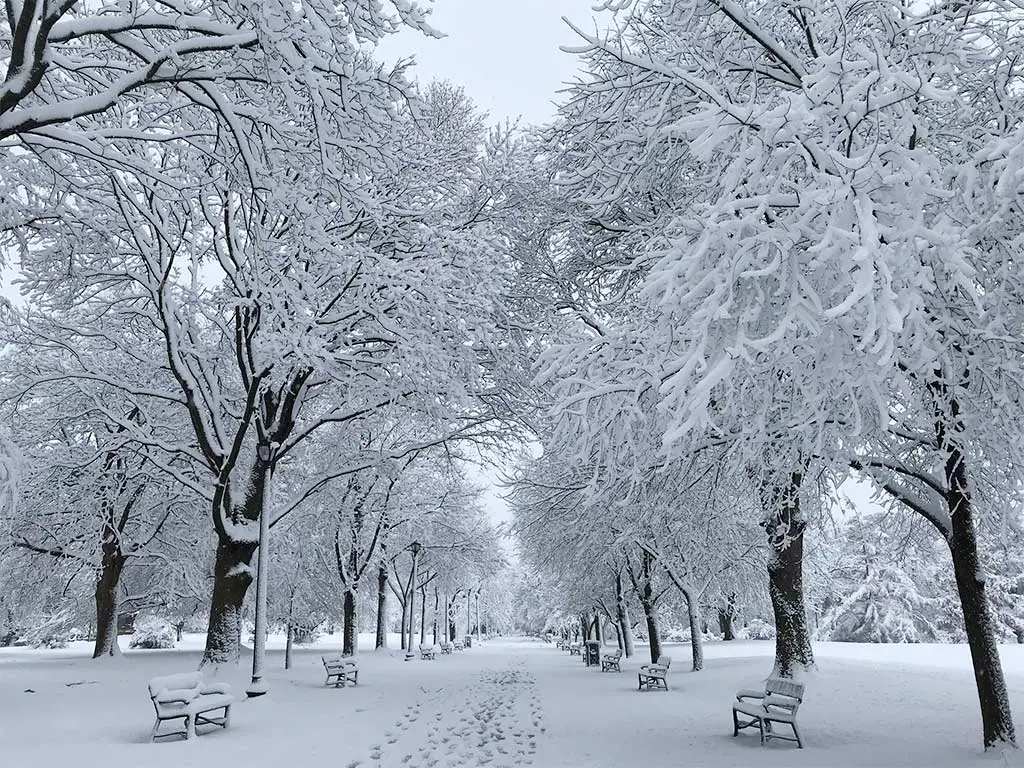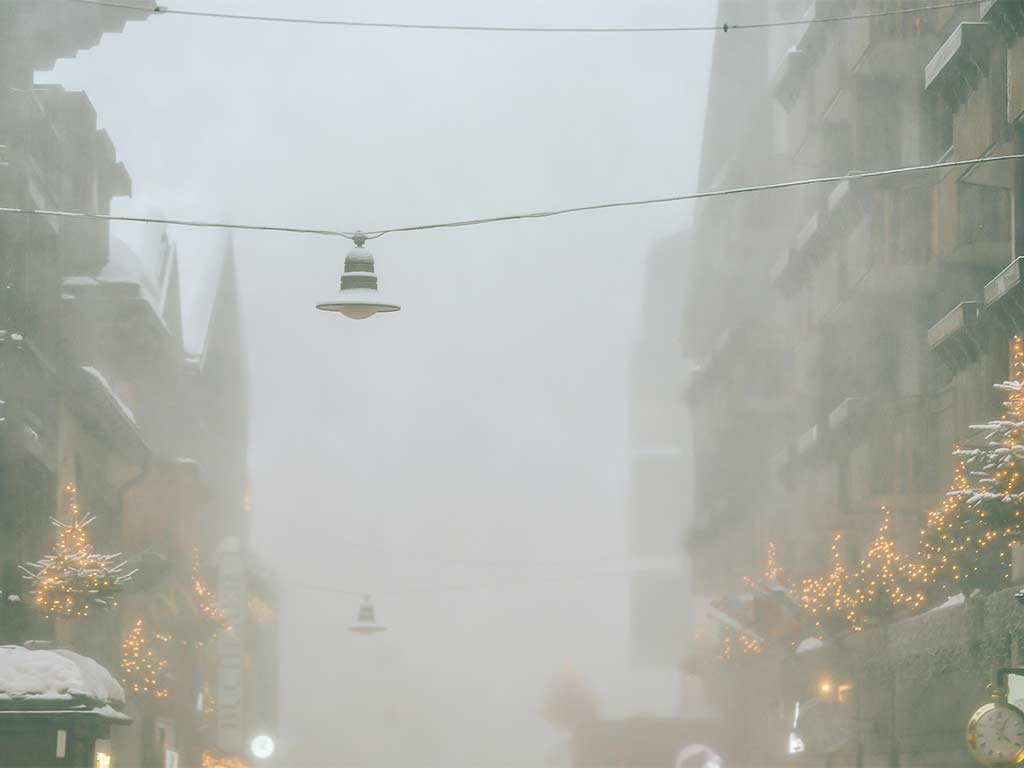Curious about the snowy past of Washington DC? Delve into the fascinating history of snowfall in the nation’s capital.
From the infamous Knickerbocker Blizzard of over a century ago to the more recent record-setting storms, Washington DC has seen its fair share of winter whiteouts.
The Knickerbocker Blizzard, known for its tragic collapse of the theater roof, remains the snowiest single storm in DC area history, leaving a mark that’s hard to forget.
As an El Niño winter unfolds, brace yourself for potential big snow events in the Washington DC region.
Past blizzards like the 2016 monster storm and the powerful blizzard eight years ago have left lasting impressions, burying suburbs under feet of snow and causing significant disruptions.
With a history of producing some of the largest blizzards, Washington DC’s snowfall legacy is one for the books. Explore the top snowstorms that have blanketed the region over the years, shaping the winter narrative of the capital city.
Historical Overview of Snowfall in Washington DC

Snowfall in Washington, D.C. has played a significant role in the city’s history and has had various impacts on its infrastructure, economy, and daily life.
Here’s a historical overview:
Record-Breaking Snowstorms
Washington DC has a history marked by significant snow events that have left lasting impressions on its landscape.
One such storm, the Knickerbocker Blizzard of 1922, resulted in a tragic theater roof collapse, claiming nearly 100 lives and injuring 133 individuals.
This historical event serves as a somber reminder of the devastating impact severe snowstorms can have on the region.
In more recent times, the capital city experienced the Snowmageddon storm in February 2010, which remains the top snowstorm on record at the observing site.
The three snowstorms during the first two weeks of February, combined with a record-breaking December storm, led to unprecedented snowfall totals, reshaping the winter narrative of Washington DC.
Average Annual Snowfall Trends
On average, Washington DC typically sees around 2 inches of snow on the ground during a snowfall event. The region experiences snow accumulation of approximately two inches three to four times in a typical winter.
However, more substantial snowstorms, like a 10-inch snow event, occur about once every five years, leading to periods of heightened winter weather activity in the capital city.
These trends in average annual snowfall underscore the variability in winter weather patterns experienced by Washington DC.
The city’s residents and authorities remain vigilant and prepared for the possibility of both minor and major snow events, ensuring that they can effectively navigate and manage the impacts of snowfall on the nation’s capital.
Notable Snowstorms in Washington DC

Washington, D.C. has seen its fair share of notable snowstorms over the years.
Here are some of the most significant ones:
Blizzard of 1922: The Knickerbocker Storm
The Knickerbocker Blizzard of 1922, also known as the Knickerbocker Storm, was a tragic event that occurred when the roof of the Knickerbocker Theatre in Washington DC collapsed under the weight of 28 inches of snow.
This catastrophic snowstorm led to 98 fatalities and 113 injuries. The consequential loss of lives and the structural failure of a significant building marked this as one of the deadliest snowstorms in the city’s history.
This catastrophic event had a lasting impact on Washington DC and served as a stark reminder of the potential dangers posed by heavy snowfall in the region.
The tragedy highlighted the importance of building safety regulations and emergency preparedness measures during extreme weather conditions.
The Great Blizzard of 1996
The Great Blizzard of 1996 struck Washington DC with significant force, causing widespread disruption and paralysis across the region.
This historic storm, dubbed the Great Blizzard, affected not only the nation’s capital but also paralyzed much of the eastern United States.
DC experienced record cold temperatures during this blizzard, with the mercury plunging to 15 degrees Fahrenheit. The storm’s impact extended down to southern states like Florida, highlighting its immense scale and severity.
Snowstorm of February 2010
In February 2010, Washington DC faced the unforgettable Snowmageddon storm, which left a lasting impact on the city and its residents.
This particular snowstorm was the most impactful blizzard of the snowiest winter in the DC, Maryland, and Virginia (DMV) region.
Elkridge MD recorded the highest snowfall totals, with over 38 inches of snow, while Dulles Airport received approximately 33 inches.
The Snowmageddon storm, coupled with a second blizzard in February, intensified its effects, with an additional foot of snow blanketing many areas.
Recent Snowfall Patterns in Washington DC

Recent snowfall patterns in Washington, D.C. have shown some variability due to factors like climate change and natural weather cycles.
Here’s an overview:
Impact of Climate Change on Snowfall
In recent years, Washington DC has experienced fluctuations in snowfall patterns attributed to climate change. The changing climate has resulted in uncertainty regarding snowfall amounts and frequencies.
Scientists have observed that warmer temperatures due to climate change can lead to more intense winter storms with heavier snowfall potential.
It’s crucial to monitor these shifts in snowfall patterns to enhance preparedness and response strategies in the region.
By closely monitoring these shifts in snowfall patterns, stakeholders can better prepare and respond to the changing climate conditions in Washington DC.
Adapting strategies based on this data is essential for effectively managing the impact of climate change on snowfall in the region.
Snowfall Analysis from 2010 to Present
Analyzing snowfall data from 2010 to the present provides valuable insights into the changing winter weather dynamics in Washington DC.
The Snowmageddon storm of February 2010, which brought significant snow accumulation and widespread disruptions, marked a turning point in the city’s snowfall history.
Subsequent years have seen varying snowfall amounts, highlighting the unpredictability of winter weather in the region.
Studying these patterns can aid in developing better forecasting models and snow removal protocols for future snow events.
Snowfall Comparisons and Records

Comparing snowfall data and records over time provides valuable insights into the historical patterns and extremes experienced in Washington, D.C.
Here’s an overview:
Heaviest Single-Day Snowfalls
When comparing snowfall records in Washington DC, some of the heaviest single-day snowfalls stand out. For instance, the Knickerbocker Blizzard of 1922 left a significant mark with 28 inches of snowfall, resulting in a tragic incident at the Knickerbocker Theatre.
This catastrophic event claimed the lives of 98 individuals and left 113 injured. The heavy snow accumulation causing the roof collapse remains a poignant reminder of the city’s vulnerability to extreme winter conditions.
Longest Snowfall Events
Washington DC has experienced some of the longest snowfall events in history, shaping the city’s winter landscape.
The Great Blizzard of 1899, lasting from February 11 to February 13, brought about 20.5 inches of snow over a span of three days, leaving a lasting impact on the region.
The prolonged snowfall not only disrupted daily life but also tested the city’s resilience in the face of severe winter weather.
Such extended snowfall events highlight the importance of robust snow preparedness measures to ensure the safety and well-being of residents during extreme weather conditions.
Great 3 Day Snow Accumulation Records
Here are the examples of the great three day snowfall history of Washington DC:
Greatest Amount of Snow in One Day
The record for the greatest amount of snow in one day in Washington DC was 24 inches. This significant snowfall occurred in a single-day event, making it a notable weather occurrence in the region.
Such a heavy snowfall can have a major impact on transportation, infrastructure, and daily life in the city. It is crucial for residents to be prepared for such extreme weather events to ensure safety and minimize disruptions.
Greatest Amount of Snow in Two Days
Washington DC saw a remarkable snow event with the greatest cumulative snowfall in two days totaling 32.4 inches. This record highlights the city’s susceptibility to heavy snowfall over a short period.
As a result, this significant snow event caused widespread disruptions in the city, leading to closures of schools, businesses, and transportation services.
The accumulation of over 2 feet of snow in just 48 hours posed challenges for residents and city officials alike.
Greatest Amount of Snow in Three Days
For a three-day snow accumulation record, Washington DC experienced significant snowfall totaling 58.4 inches.
This extended period of snow accumulation underscores the city’s endurance through prolonged winter weather conditions.
Washington DC’s resilience was truly tested during this period, as the city had to navigate through nearly 60 inches of snow over three days.
This remarkable snowfall history highlights the region’s ability to withstand extreme winter conditions.
The city’s ability to manage such a substantial amount of snow in just three days showcases its robust infrastructure and preparedness for severe winter weather events.
Washington DC’s resilience in the face of extreme snowfall is a testament to its capability to handle challenging weather conditions effectively.
Greatest Snowfall in One Season
The greatest cumulative snowfall in one season for Washington DC was 58.4 inches. This exceptional snowfall amount in a single winter season emphasizes the city’s historical encounters with substantial snowfall over an extended period.
It’s crucial to note that this record snowfall occurred during the winter of 2009-2010, highlighting the variability and extremes in Washington DC’s snowfall patterns.
Such historical data provides valuable insights for understanding the city’s climate trends and preparing for future winter weather events.
Frequently Asked Questions
What historical snowstorms have impacted Washington DC?
Washington DC has witnessed significant snowstorms throughout history, including the Knickerbocker Blizzard of 1922, the Great Blizzard of 1996, and the Snowmageddon storm of February 2010.
How has climate change affected snowfall in Washington DC?
Climate change has led to increased variability in snowfall patterns in Washington DC, emphasizing the need for adaptive preparedness strategies.
Why is monitoring snowfall patterns important?
Monitoring snowfall patterns post-2010 is crucial for improved forecasting and snow removal protocols, as it highlights changing winter dynamics in the region.
What snowfall records exist in Washington DC?
Washington DC has seen record snowfall amounts in one, two, and three days, along with the highest cumulative snowfall in a single season, showcasing the city’s vulnerability to extreme winter conditions.
Conclusion
You’ve now gained valuable insights into the rich history of snowfall in Washington DC, from historic blizzards to recent snowfall patterns.
Understanding the impact of climate change on snowfall variability is crucial for enhancing preparedness strategies.
Monitoring snowfall data is key to improving forecasting and snow removal efforts. By exploring notable snowfall records, you’ve seen the region’s susceptibility to extreme winter conditions.
Stay informed and prepared for future snow events in Washington DC. Utilizing this knowledge can help residents and authorities alike better anticipate and respond to snowfall occurrences in the nation’s capital.
By staying proactive and informed, you can enhance safety measures during winter months.




Allison Brice